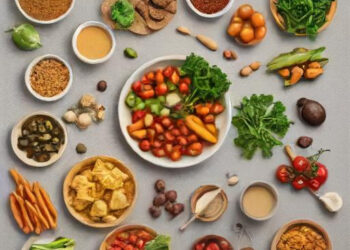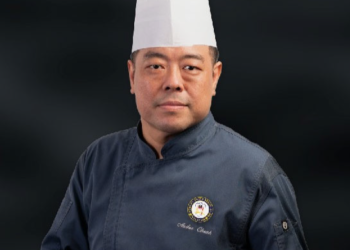-Pranshu Sikka, CEO and Founder, The Pivotals
The ongoing pandemic has showcased how change can happen at a rapid pace over a brief period of time. And while that stands true for most human habits, food is one that probably bore the burden of most changes in our COVID-induced lifestyle.
 There is simply no doubt about the fact that food consumption, and particularly our eating habits, have been significantly impacted owing to concerns around hygiene, safety, and social distancing. And it is going to also fundamentally alter our relationship with food vis-à-vis celebrations, eating out, casual or business dining, home delivery, street food, snacking, and so much more.
There is simply no doubt about the fact that food consumption, and particularly our eating habits, have been significantly impacted owing to concerns around hygiene, safety, and social distancing. And it is going to also fundamentally alter our relationship with food vis-à-vis celebrations, eating out, casual or business dining, home delivery, street food, snacking, and so much more.
And it is visible all around us already. Many of us who were not particularly fond of cooking, were forced to pick up the habit, and have now transformed into proud owners of their newly-acquired culinary skills. As of today, the hashtag ‘#QuarantineCooking’ has close to 600,000 posts only on Instagram.
Then there has also been a sort of ‘ghar-wapasi’ (returning-home) to home cooking. While it started as a more hygienic alternative to takeaways and home deliveries during the lockdown, many people have now begun to realize the health benefits associated with having home-cooked meals. Moreover, home-cooked meals have served as a great backdrop for family togetherness during these times, with different members in bigger families getting together to cook feasts every now and then.
What people have also realized is that cooking isn’t as difficult as it may have come across earlier. With the rise of digital media consumption during the lockdown, people have turned to a lot of YouTube recipes and videos for help, making new home chefs of the more reluctant cooks of the family. And with small praise on social media, it has only emboldened and encouraged people to pursue this ‘passion’.
So, how will all of these changes alter the food marketing landscape?
One thing is for sure – all food branding will now definitely focus on quality. More than ever, this is what will build brand loyalty by assuring customers of hygiene, safety and quality, and building more brand trust. In fact, according to Edelman’s Trust barometer survey, 71 percent of respondents agree that brand trust is on par with quality, value, convenience, and ingredients as a purchase consideration. The food industry will have to pay a lot of attention to whether they are able to ably build that trust.
As far as eating out is concerned, consumers may not be able to go to their favourite restaurants anymore, but that doesn’t mean they won’t crave their favourites. How do food providers market themselves in this scenario when eating out is not an option for a long time to come? They simply bring the restaurant home! And no, we are not talking about deliveries or takeaways.
In fact, what we might see is a rise in foodservice providers who can start a market for ‘meal kits’, which can even be accompanied by menu teaching classes, where chefs can teach people how to cook their favourite restaurant meals online. Did you know that in a report by GlobalData, the Indian meal kits market was already poised to grow from Rs 260 crore in 2018 to Rs 470 crore by 2023? And this was before the lockdown even happened, so now one can only imagine the opportunities for advertising this new domain in the food industry. And while we already have the MTRs and Haldirams making a big dent in this category, there is now a wider scope for other food providers to join the growing market.
And quite in line with the trend of meal kits, we could also see a big shift in how luxury and gourmet hospitality brands serve food to their consumers. ITC Hotels, for instance, has been serving its famed ‘Daal Bukhara’ in packages for a very long time now. Now, with customers seeking safety over eating out, one can expect other hospitality players to join the league of ITC, and enter the food-delivery ecosystem. In fact, five-star hotels such as Marriott and Hilton are already leveraging on Zomato and Swiggy to serve customers amidst COVID.
And finally, one big aspect of food marketing that is likely to pick up the pace is YouTube and other forms of social media. Now that YouTube has become the go-to for most people looking to cook, a number of professional chefs will turn to these platforms to find followers through Master Classes, Cooking Shows, Demos, and more. Especially because now they don’t have their restaurant to reach out to their customers. And this will be especially important for food businesses who have shut down due to COVID. For example, Mumbai’s famous Le15 cafe run by renowned pastry chef Pooja Dhingra had to shut shop in May due to the impact of coronavirus. However, she has now turned to social media to share food podcasts, and ‘Bake at Home’ recipes to stay relevant, amassing a sweet 6.3 million followers.
There is no way to know if civilization will ever reboot to the way it was before COVID-19 struck us. But it will definitely force a major rethinking of food advertising and marketing. Your brand will no longer be about you, your chef, or your food, but about how you serve your customers, keeping in mind their conveniences, preferences, and safety. Marketing messaging will have to shift to encourage more loyalty and building brand trust, by jotting down more creative ways of marketing that make customers want to choose them over anyone else.







